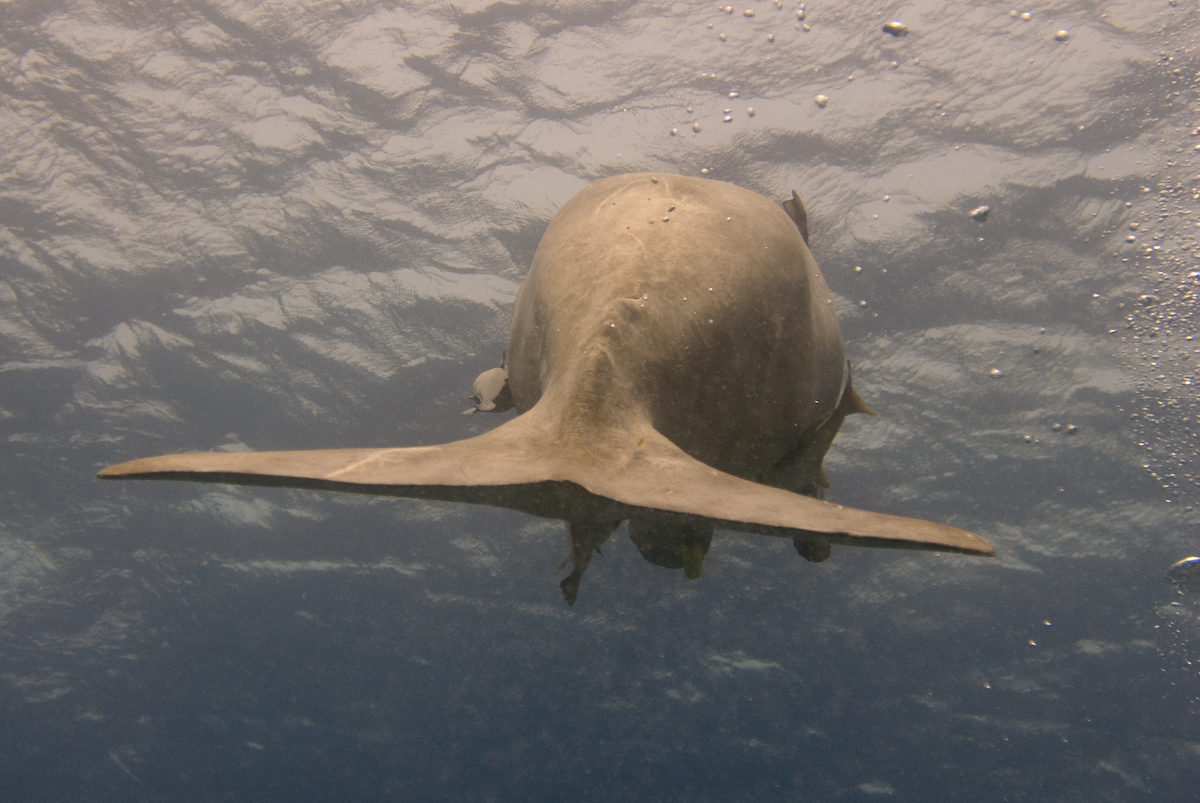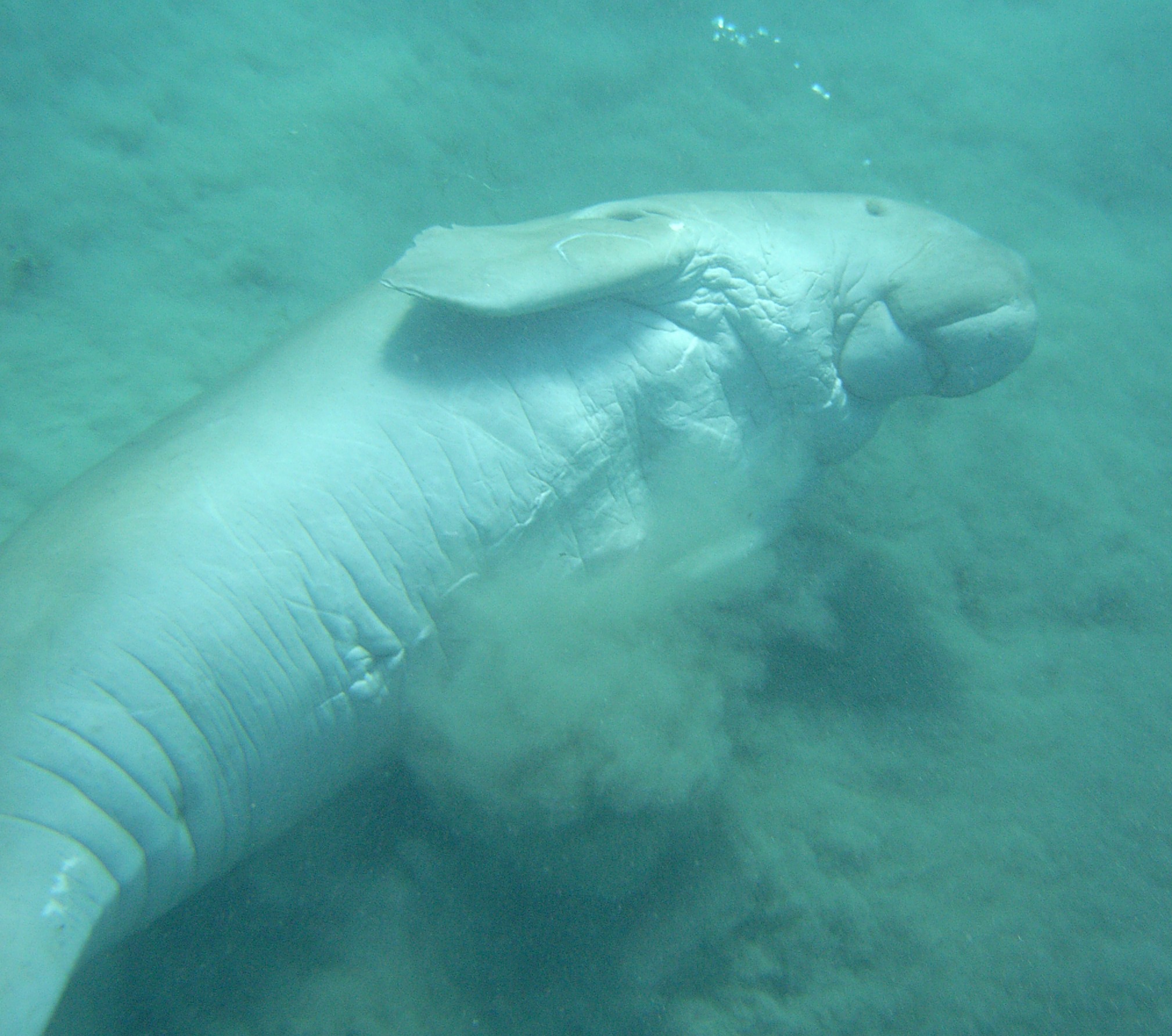|
Dugongidae
Dugongidae is a family in the order of Sirenia. The family has one surviving species, the dugong (''Dugong dugon''), one recently extinct species, Steller's sea cow (''Hydrodamalis gigas''), and a number of extinct genera known from fossil records. Dugongidae's body weight ranges from 217 to 307 kg for juveniles, 334 to 424 kg for subadults, and 435 to 568.5 kg for adults. Oral temperatures for individual dugongs is determined from 24° to 34.2 °C. Heart rate readings are from 40 to 96 bpm and vary between individual dugongs. Respiration rate during the out-of-water phase is from 1 to 33. Taxonomy * Family DUGONGIDAE ** Genus †''Anisosiren'' ** Genus †''Caribosiren'' ** Genus †'' Indosiren'' ** Genus †''Lentiarenium'' ** Genus †''Kaupitherium'' ** Genus †'' Paralitherium'' ** Genus †''Priscosiren'' ** Genus †'' Prohalicore'' ** Genus †''Sirenavus'' ** Subfamily †Halitheriinae *** Genus †''Halitherium'' (''nomen dubium'') ** Subfamily ... [...More Info...] [...Related Items...] OR: [Wikipedia] [Google] [Baidu] |
Sirenia
The Sirenia (), commonly referred to as sea-cows or sirenians, are an order of fully aquatic, herbivorous mammals that inhabit swamps, rivers, estuaries, marine wetlands, and coastal marine waters. The Sirenia currently comprise two distinct families: Dugongidae (the dugong and the now extinct Steller's sea cow) and Trichechidae (manatees, namely the Amazonian manatee, West Indian manatee, and West African manatee) with a total of four species. The Protosirenidae (Eocene sirenians) and Prorastomidae (terrestrial sirenians) families are extinct. Sirenians are classified in the clade Paenungulata, alongside the elephants and the hyraxes, and evolved in the Eocene 50 million years ago (mya). The Dugongidae diverged from the Trichechidae in the late Eocene or early Oligocene (30–35 mya). Sirenians grow to between in length and in weight. The historic Steller's sea cow was the largest known sirenian to have lived, and could reach lengths of and weights of . Sirenians have a ... [...More Info...] [...Related Items...] OR: [Wikipedia] [Google] [Baidu] |
Dugong
The dugong (; ''Dugong dugon'') is a marine mammal. It is one of four living species of the order Sirenia, which also includes three species of manatees. It is the only living representative of the once-diverse family Dugongidae; its closest modern relative, Steller's sea cow (''Hydrodamalis gigas''), was hunted to extinction in the 18th century. The dugong is the only sirenian in its range, which spans the waters of some 40 countries and territories throughout the Indo-West Pacific. The dugong is largely dependent on seagrass communities for subsistence and is thus restricted to the coastal habitats which support seagrass meadows, with the largest dugong concentrations typically occurring in wide, shallow, protected areas such as bays, mangrove channels, the waters of large inshore islands and inter-reefal waters. The northern waters of Australia between Shark Bay and Moreton Bay are believed to be the dugong's contemporary stronghold. Like all modern sirenians, the dugong ... [...More Info...] [...Related Items...] OR: [Wikipedia] [Google] [Baidu] |
Dugong Skeleton Displayed At Philippine National Museum
The dugong (; ''Dugong dugon'') is a marine mammal. It is one of four living species of the order Sirenia, which also includes three species of manatees. It is the only living representative of the once-diverse family Dugongidae; its closest modern relative, Steller's sea cow (''Hydrodamalis gigas''), was hunted to extinction in the 18th century. The dugong is the only sirenian in its range, which spans the waters of some 40 countries and territories throughout the Indo-West Pacific. The dugong is largely dependent on seagrass communities for subsistence and is thus restricted to the coastal habitats which support seagrass meadows, with the largest dugong concentrations typically occurring in wide, shallow, protected areas such as bays, mangrove channels, the waters of large inshore islands and inter-reefal waters. The northern waters of Australia between Shark Bay and Moreton Bay are believed to be the dugong's contemporary stronghold. Like all modern sirenians, the dugon ... [...More Info...] [...Related Items...] OR: [Wikipedia] [Google] [Baidu] |
Dugong
The dugong (; ''Dugong dugon'') is a marine mammal. It is one of four living species of the order Sirenia, which also includes three species of manatees. It is the only living representative of the once-diverse family Dugongidae; its closest modern relative, Steller's sea cow (''Hydrodamalis gigas''), was hunted to extinction in the 18th century. The dugong is the only sirenian in its range, which spans the waters of some 40 countries and territories throughout the Indo-West Pacific. The dugong is largely dependent on seagrass communities for subsistence and is thus restricted to the coastal habitats which support seagrass meadows, with the largest dugong concentrations typically occurring in wide, shallow, protected areas such as bays, mangrove channels, the waters of large inshore islands and inter-reefal waters. The northern waters of Australia between Shark Bay and Moreton Bay are believed to be the dugong's contemporary stronghold. Like all modern sirenians, the dugong ... [...More Info...] [...Related Items...] OR: [Wikipedia] [Google] [Baidu] |
Steller's Sea Cow
Steller's sea cow (''Hydrodamalis gigas'') is an extinct sirenian described by Georg Wilhelm Steller in 1741. At that time, it was found only around the Commander Islands in the Bering Sea between Alaska and Russia; its range extended across the North Pacific during the Pleistocene epoch, and likely contracted to such an extreme degree due to the glacial cycle. It is possible indigenous populations interacted with the animal before Europeans. Steller first encountered it on Vitus Bering's Great Northern Expedition when the crew became shipwrecked on Bering Island. Much of what is known about its behavior comes from Steller's observations on the island, documented in his posthumous publication ''On the Beasts of the Sea''. Within 27 years of its discovery by Europeans, the slow-moving and easily-caught mammal was hunted into extinction for its meat, fat, and hide. Some 18th-century adults would have reached weights of and lengths up to . It was a member of the family Dugongida ... [...More Info...] [...Related Items...] OR: [Wikipedia] [Google] [Baidu] |
Hydrodamalis
''Hydrodamalis'' is a genus of extinct herbivorous sirenian marine mammals, and included the Steller's sea cow (''Hydrodamalis gigas''), the Cuesta sea cow (''Hydrodamalis cuestae''), and the Takikawa sea cow (''Hydrodamalis spissa''). The fossil genus ''Dusisiren'' is regarded as the sister taxon of ''Hydrodamalis'': together, the two genera form the dugong subfamily Hydrodamalinae. They were the largest member of the order Sirenia, whose only extant members are the dugong (''Dugong dugon'') and the manatees (''Trichechus'' spp.). They reached up to in length, making the Steller's sea cow among the largest mammals other than whales to have existed in the Holocene epoch. Steller's sea cow was first described by Georg Wilhelm Steller, Cuesta by Daryl Domning, and Takikawa by Hitoshi Furusawa. The Steller's sea cow was the only member of the genus to survive into modern times, and, although had formerly been abundant throughout the North Pacific, by the mid 1700s, its range had b ... [...More Info...] [...Related Items...] OR: [Wikipedia] [Google] [Baidu] |
Lentiarenium
''Lentiarenium'' was an early sea cow from the Late Oligocene (Chattian) Linz-Melk Formation of Austria. Known since the mid 19th century, ''Lentiarenium'' was long considered to be a species of ''Halitherium'' until a 2016 analysis showed it to be distinct. History and naming The earliest discoveries of ''Lentiarenium'' date to the early 19th century, with a mandible, ribs, vertebrae and molars being found in sandpits of the city of Linz. Following communication between several researchers across multiple Austrian institutions, the remains were correctly identified as belonging to an extinct species of seacow by paleontologist Leopold Fitzinger, who would go on to describe the material in 1842. Fitzinger believed the bones to belong to the sirenian ''Halitherium'', described by Johann Jakob Kaup just four years prior. At the time of its description, it was thought to be the only sirenian of the area surrounding Linz. However additional finds from Upper Austria were made followin ... [...More Info...] [...Related Items...] OR: [Wikipedia] [Google] [Baidu] |
Culebratherium
''Culebratherium'' is an extinct genus of dugongid sirenian mammal which existed in what is now Panama during the Early Miocene. It takes its name from the upper member of the Culebra Formation of the Panama Canal Zone, in which the holotype A holotype is a single physical example (or illustration) of an organism, known to have been used when the species (or lower-ranked taxon) was formally described. It is either the single such physical example (or illustration) or one of several ... fossil was found.Vélez Juarbe & Wood, 2019 References Bibliography * Miocene sirenians Burdigalian life Miocene mammals of North America Hemingfordian Neogene Panama Fossils of Panama Fossil taxa described in 2019 Prehistoric placental genera {{Paleo-sirenian-stub ... [...More Info...] [...Related Items...] OR: [Wikipedia] [Google] [Baidu] |
Kaupitherium
''Kaupitherium'' is an extinct dugongid sea cow that lived during the Oligocene. Fossils of the genus have been found in the Alzey Formation of Germany. Inside its flippers were finger bones that did not stick out. ''Kaupitherium'' also had the residues of back legs, which did not show externally. However, it did have a basic femur, joined to a reduced pelvis. ''Kaupitherium'' also had elongated ribs, presumably to increase lung capacity to provide fine control of buoyancy. Taxonomy "Halitheriine" dugongid remains from Oligocene deposits in Europe were previously referred to '' Halitherium schinzii'' by many authors. However, Voss (2013, 2014) dismissed ''Halitherium'' as a ''nomen dubium'' by virtue of being based on non-diagnostic remains. Voss based the opinion on the type species, ''H. schinzii'', being ''nomen dubium'', with its holotype fossil, an isolated molar, having no diagnostic value.Voss, Manja. "On the invalidity of Halitherium schinzii Kaup, 1838 (Mammalia, Siren ... [...More Info...] [...Related Items...] OR: [Wikipedia] [Google] [Baidu] |
Priscosiren
''Priscosiren'' is an extinct genus of mammal which existed in the west Atlantic and Puerto Rico during the early Oligocene (Chattian The Chattian is, in the geologic timescale, the younger of two ages or upper of two stages of the Oligocene Epoch/Series. It spans the time between . The Chattian is preceded by the Rupelian and is followed by the Aquitanian (the lowest stage ...).Jorge Vélez-Juarbe & Daryl P. Domning (2014) Fossil Sirenia of the West Atlantic and Caribbean region: X. Priscosiren atlantica, gen. et sp. nov., Journal of Vertebrate Paleontology, 34:4, 951-964, DOI: 10.1080/02724634.2013.815192 Description ''Priscosiren'' was diagnosed from other "halitheriine" dugongids by Velez-Juarbe and Domning (2014). Phylogeny ''Priscosiren'' is recovered by Velez-Juarbe and Domning (2014) as sister to the ''Metaxytherium'' + Hydrodamalinae and Dugonginae clades. References Oligocene sirenians Fossil taxa described in 2014 Prehistoric placental genera {{P ... [...More Info...] [...Related Items...] OR: [Wikipedia] [Google] [Baidu] |
Caribosiren
''Caribosiren'' is an extinct genus of mammal which existed in what is now Puerto Rico during the late Oligocene (Chattian The Chattian is, in the geologic timescale, the younger of two ages or upper of two stages of the Oligocene Epoch/Series. It spans the time between . The Chattian is preceded by the Rupelian and is followed by the Aquitanian (the lowest stage ...). References Oligocene sirenians Fossil taxa described in 1959 Prehistoric placental genera {{Paleo-sirenian-stub ... [...More Info...] [...Related Items...] OR: [Wikipedia] [Google] [Baidu] |
Sirenavus
''Sirenavus'' was an early sea cow from the Eocene of Hungary ( Eger-Kis-Eged, Felsogalla, Felsotarkany and Urom). Location Fossils of ''Sirenavus'' are known from the Eocene deposits in Hungary.L. Kordos. 2002. Eocene sea cows (Sirenia, Mammalia) from Hungary. Fragmenta Palaeontologica Hungarica 20:43-48 See also *Evolution of sirenians Sirenia is the order of placental mammals which comprises modern "sea cows" (manatees and the Dugong) and their extinct relatives. They are the only extant herbivorous marine mammals and the only group of herbivorous mammals to have become com ... References Eocene sirenians Lutetian life Bartonian life Priabonian life Eocene mammals of Europe Fossils of Hungary Fossil taxa described in 1941 Prehistoric placental genera {{Paleo-sirenian-stub ... [...More Info...] [...Related Items...] OR: [Wikipedia] [Google] [Baidu] |

_colourised.png)




